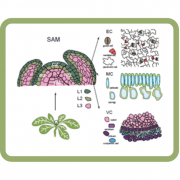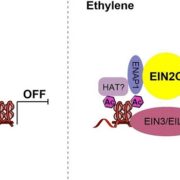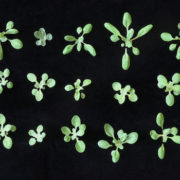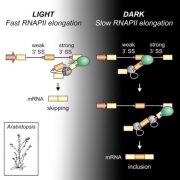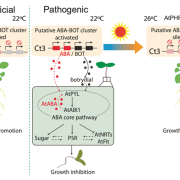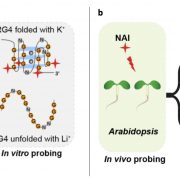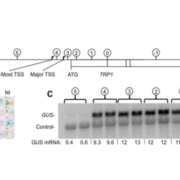Regulation of rice root development by a retrotransposon acting as a microRNA sponge
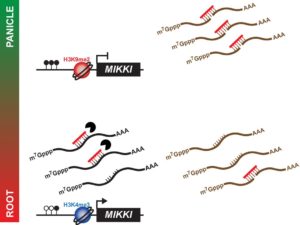 Transposable elements (TEs) compose a considerable portion of most plant genomes, and mounting evidence shows various roles of TEs in the regulation of gene expression. Some TE transcripts have been hypothesized to work as “sponges” to help fine-tune the levels of miRNAs through complementary binding. Though the miRNA sponge model is supported by TE overexpression studies, specific examples of its involvement in regulatory networks have yet to be seen. Here, Cho and Paszkowski report the novel role of a retrotransposon as a miRNA sponge in root development. They demonstrate that a root-specific transcript derived from a retrotransposon, dubbed MIKKI, acts as a decoy target for the miRNA miR171. miR171 is well-studied for its role in targeting members of the SCARECROW-LIKE family of root-specific transcription factors. MIKKI transcripts demonstrate modulation of miR171 levels in roots, thus revealing an additional tier of complexity to this transcriptional network and a novel mechanism of gene regulation. (Summary by Alexander Meyers) eLIFE 10.7554/eLife.30038
Transposable elements (TEs) compose a considerable portion of most plant genomes, and mounting evidence shows various roles of TEs in the regulation of gene expression. Some TE transcripts have been hypothesized to work as “sponges” to help fine-tune the levels of miRNAs through complementary binding. Though the miRNA sponge model is supported by TE overexpression studies, specific examples of its involvement in regulatory networks have yet to be seen. Here, Cho and Paszkowski report the novel role of a retrotransposon as a miRNA sponge in root development. They demonstrate that a root-specific transcript derived from a retrotransposon, dubbed MIKKI, acts as a decoy target for the miRNA miR171. miR171 is well-studied for its role in targeting members of the SCARECROW-LIKE family of root-specific transcription factors. MIKKI transcripts demonstrate modulation of miR171 levels in roots, thus revealing an additional tier of complexity to this transcriptional network and a novel mechanism of gene regulation. (Summary by Alexander Meyers) eLIFE 10.7554/eLife.30038


